Baseball History Comes Alive Now Ranked #2 by Feedspot Among All Internet Baseball History Websites and Blogs!
Guest Submissions from Our Readers Always Welcome!
Scroll Down to Read Today’s Essay
Subscribe to Baseball History Comes Alive for automatic updates. As a Free Bonus, you’ll get instant access to my Special Report: Gary’s Handy Dandy World Series Reference Guide!
Roy Campanella Photo Gallery
Click on any image below to see photos in full size and to start Photo Gallery:
“Out! By a Country Mile!”
Campy Sends Billy Martin Airborne!
“I never want to quit playing ball. They’ll have to cut this uniform off of me to get me out of it.” -Roy Campanella
Sixty-eight years ago last Fall, November 27, 1953, Roy Campanella was named the National League MVP, his second of three awards (1951, ’53, and ’55). It was a great year for Campy, which included his historic start to the season to the 1953 season.
On May 10, 1953, Roy hit a double and a home run in a game against the Phillies at Ebbets Field. With those two hits, Campy drove in all five runs in the Dodgers’ 5-0 victory. The five tallies gave him more than 40 RBIs in the first 30 games of the season, a feat that wouldn’t be matched for 44 years until Tino Martinez did it in 1997 with the Yankees.
Roy Campanella’s Great Second MVP Season, 1953
And after that great start, what a year Campy put together! It was the best of his
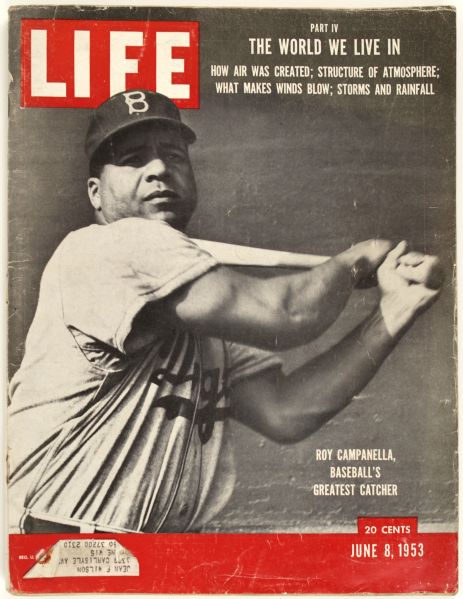
three MVP seasons. He hit .312, with 103 runs, a league-leading 142 RBIs, 41 home runs, a .395 on-base percentage, and a .611 slugging average. His 154 OPS+ placed him well above average among his major league contemporaries (100 being the major league average).
“Out! By a Country Mile”
The featured photo above is one of my favorites. This is the final out in Game Four of the 1953 World Series. That’s Billy Martin going “airborne” after a collision at home plate with Roy Campanella, the Dodgers’ great Hall-of-Fame catcher, as teammates Gene Woodling (14) and Joe Collins (15) look on. Looks like Billy never even got close to the plate. Martin made an ill-advised attempt to score from second and was out easily, abruptly ending the game. Campy flicks Martin away like he’s a rag doll after he bounced off of Campanella’s right shin guard. Almost looks like Campy gave him a swift kick in the seat of the pants just to say “good riddance” and to teach him a lesson:
“Hey, Billy – Who do you think you are? You don’t pull stunts like that against Roy Campanella!”
Umpire Artie Gore had a nice view of the entire play and is about to thumb Martin out once he saw that Campanella held onto the ball. By the look on his face, I have a hunch Billy learned a thing or two about trying to score on a close play against the great Roy Campanella!
Campy’s Hall-of-Fame Career
Campy played in his first game on April 20, 1948, a year after Jackie Robinson broke the major league color barrier. Over his 10-career, all with the Brooklyn Dodgers (1948-’58) which was unfortunately cut short by his debilitating auto accident on January 28, 1958, the eight-time All-Star hit .276, with 1167 hits, 627 runs, 856 RBIs, 242 home runs, a 360 on-base percentage, and a .500 slugging average. In each of his three MVP seasons, he batted higher than .300, hit more than 30 home runs, and had more than 100 RBIs.
His 1949 All-Star selection made him one of the first four African-Americans honored, along with Jackie Robinson, Don Newcombe, and Larry Doby. He played in every All-Star game from 1949-’56. In 1950, he hit home runs in five straight games. Campanella caught three no-hitters during his career: Carl Erskine’s two on June 19, 1952, and May 12, 1956; and Sal Maglie’s on September 25, 1956 (this one overshadowed by Don Larsen’s World Series perfect game gem a couple weeks later). Defensively, he was one of the best ever. During his career, he threw out an astonishing 57.4% of potential base stealers, the highest percentage by any catcher in major league history.
In 1955 he helped Brooklyn win its first-ever World Series championship. After the Dodgers lost the first two games of the series to the Yankees, Campanella hit a two-out, two-run home run in the first inning of Game Three. The Dodgers won that game, then got another home run from Campanella in a Game Four victory that tied the series. They went on to win the series in seven games, their first in four tries against the Yankees of Casey Stengel.
Kind Words For Walter O’Malley
Walter O’Malley is usually depicted as the villain by Brooklyn fans, viewed as responsible for the Dodgers’ move to Los Angeles. Not so to Roy Campanella. I found this touching quote in which Campy had high praise for the oft-maligned Dodger owner:
So today we gladly turn our baseball spotlight on the great Dodger catcher, Roy Campanella. Roy passed away on June 26, 1993, aged 71.
Gary Livacari
Subscribe to our website, “Baseball History Comes Alive!” with over 1200 fully categorized baseball essays and photo galleries, now surpassing the 700K hits mark at 780K hits and over 600 subscribers: www.baseballhistorycomesalive.com
Information: Excerpts edited from Roy Campanella Wikipedia page; stats from Baseball-Reference.com

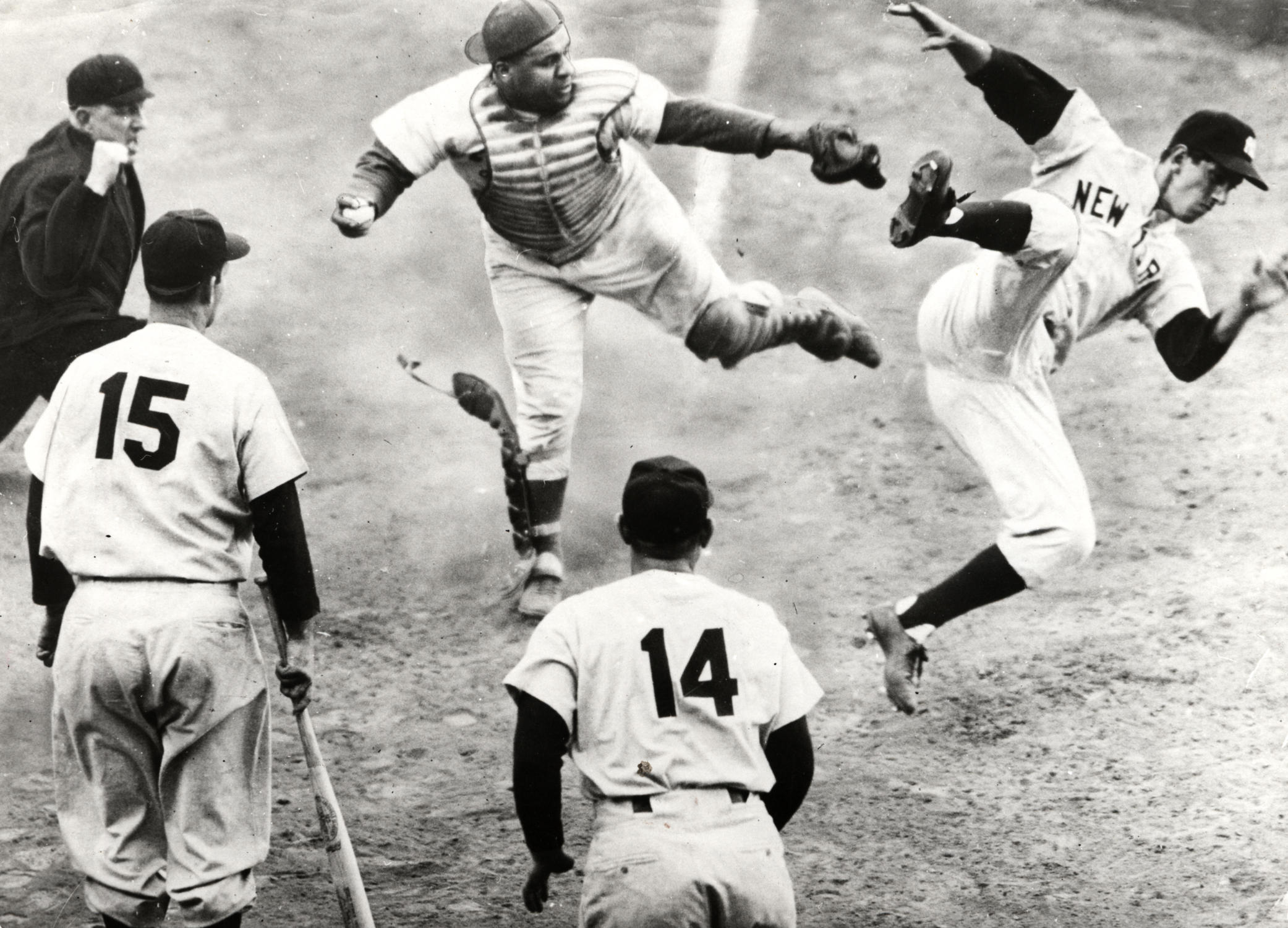
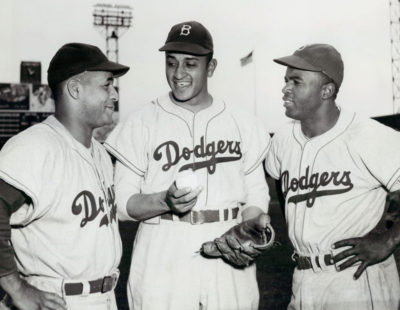
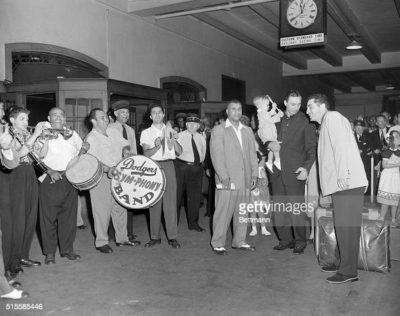
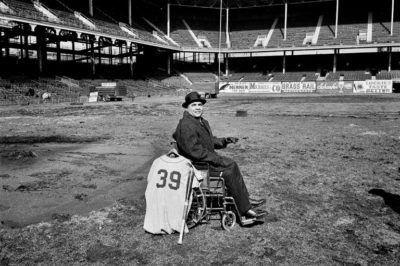
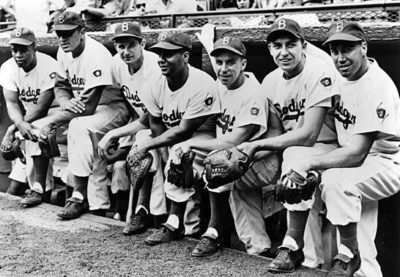
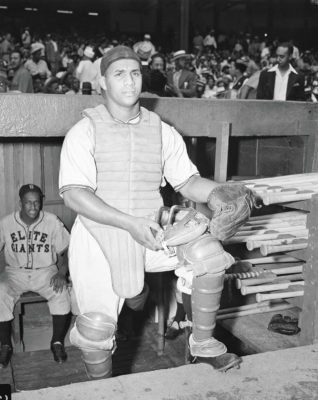
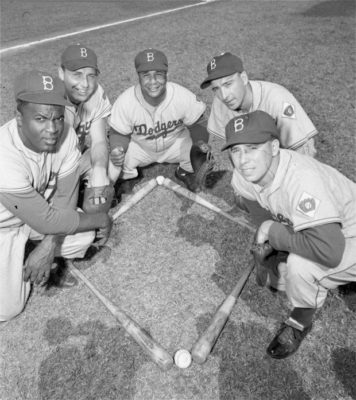
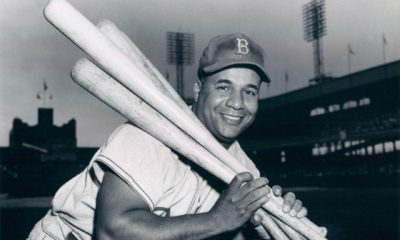
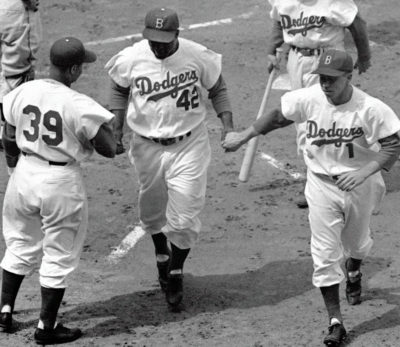
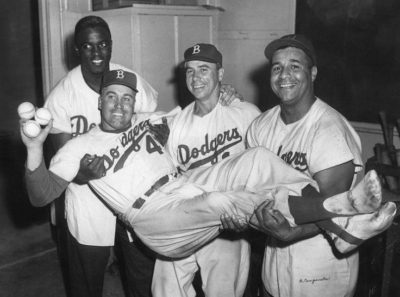
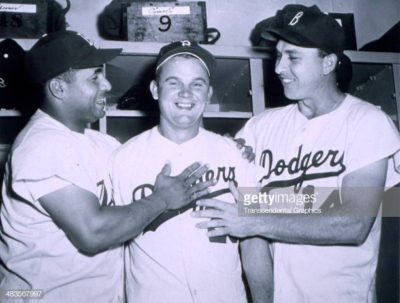
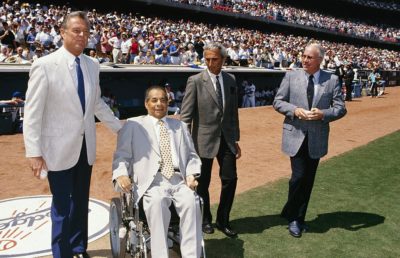
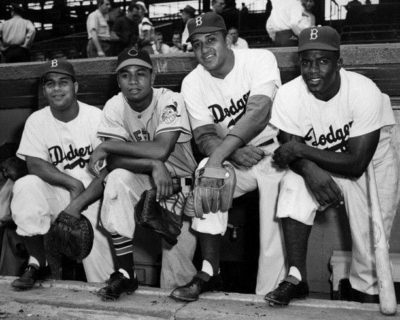
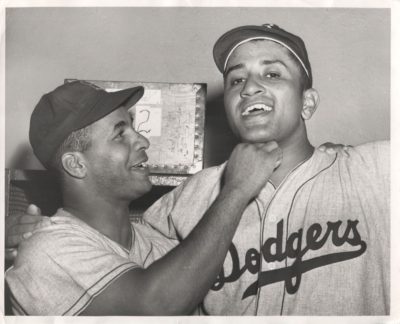
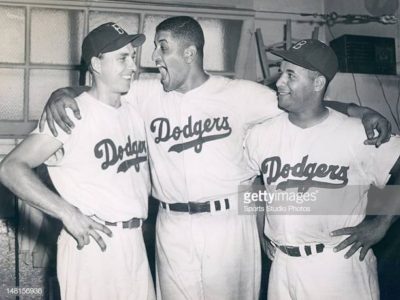
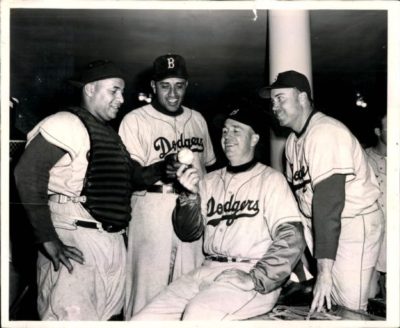
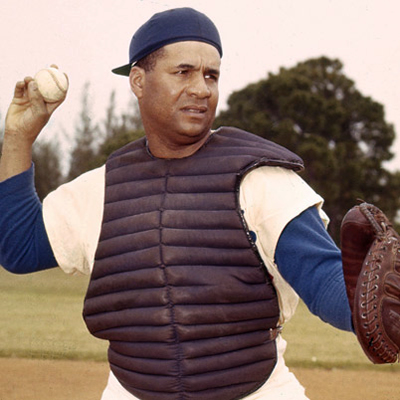
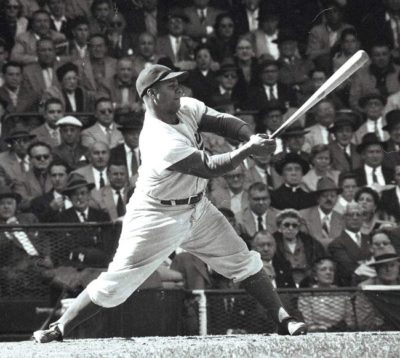
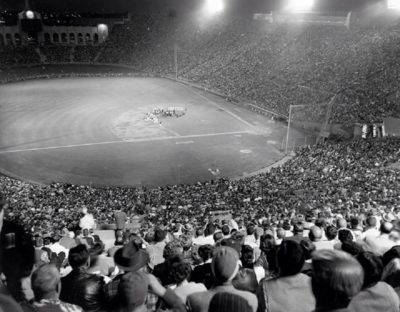
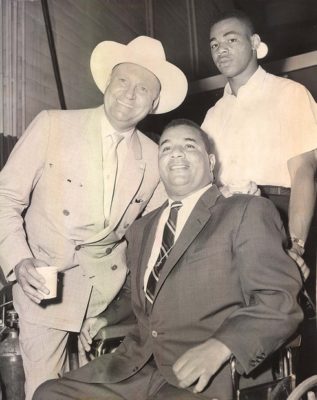
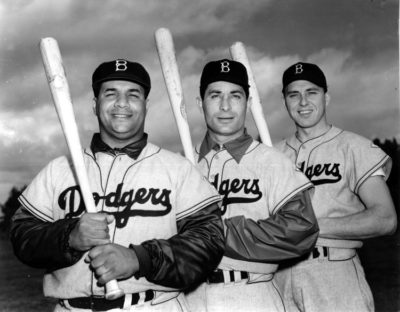
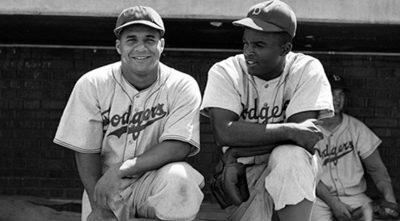
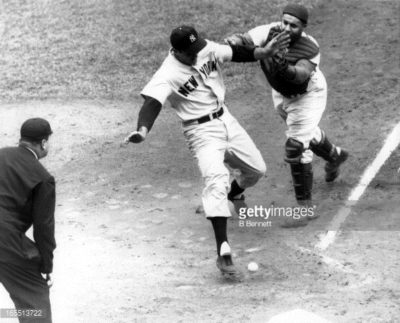
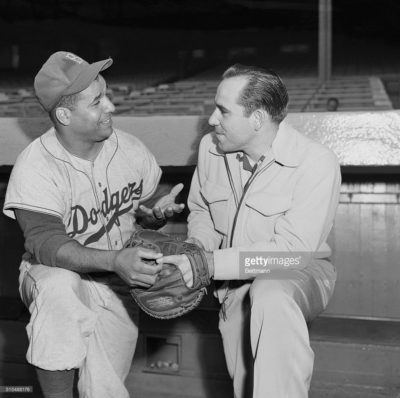
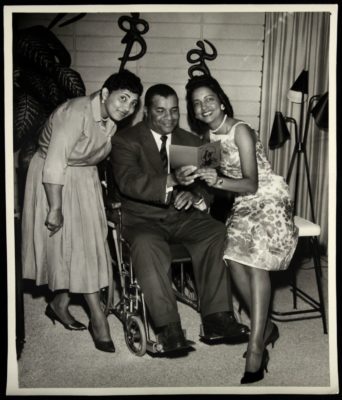
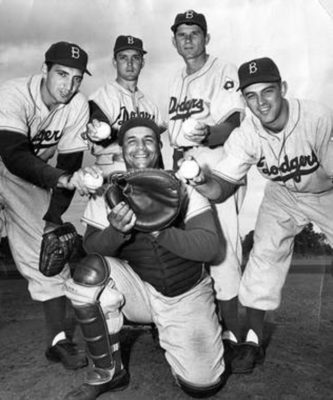
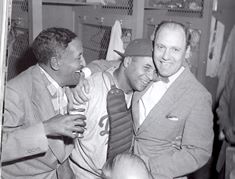
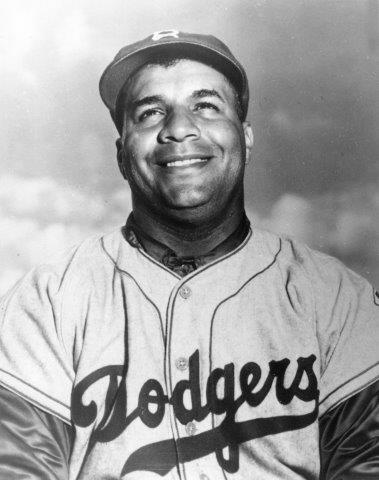 organization, Walter O’Malley stood by me, and after my injury, he stood by me and helped me through all of my crises.”
organization, Walter O’Malley stood by me, and after my injury, he stood by me and helped me through all of my crises.”
Thank you so much for the wonderful article on Roy Campanella. The photo gallery was terrific. I was a young boy in 1951, when i learned about the Brooklyn Dodgers and became hooked on the Dodgers for life. I grew up in Sacramento, California and there were no big league teams west of Kansas City at that time. We had the Sacramento Solons and were excused from class for Opening Day. When the Dodgers and Giants moved to California, most Sacramento locals cheered for the nearby San Francisco Giants. I hated the Giants because they cheated in the 1951 NL playoff. Your photos brought back all those memories. There will never be a team like the Brooklyn Dodgers again, they are still my heroes. Campy was a great player and a wonderful person, I did not realize it took until 1969 to elect him to the HOF. Now i do not recognize the HOF because it has become political and many writers who elect members are not worthy to be in that position. Thanks again for being the best historical baseball site.
Thanks for the kind words, Dennis…greatly apreciated! And I always love the personal stuff like this…great info! Glad to have you with us. -Gary
I believe Campy’s story is the saddest in baseball history and I will never understand why it took him so long to get into the HOF.
Both good points…thanks Kevin.
Gary, Campy’s stat in throwing out base stealers is beyond amazing. I knew he had a great arm, but wow!
I have that iconic picture of Roy and Billy, close-up and framed, hanging in our computer room!
Campanella was murder at Ebbets field when the game was on the line. He had a patent on the game winning home run, stroked to the second row, in left center field to win the game. I feared him more than any Dodger when the chips were down. And, although he killed the Giants, I loved him.
His unfortunate accident was one of baseball’s great tragedies.
Dennis, good post, agree with most of your points.
Don’t get too bitter about the Giants sign stealing. They were red hot home and away. Plus, some players didn’t want the signs, including Monte Irvin, a one man wrecking crew down the stretch, plus:
(1) Jints won game one at Ebbets Field on a Bobby Thomson homer off Branca. No clubhouse or mirrors there.
(2) Dodgers won their only game 10-0 behind Clem Labine at the PG. So much for knowing what was coming.
(3) Dodgers lost game three because Rube Walker called for two consecutive pitches in Thomson’s wheelhouse. The second cost Brooklyn the pennant
(4) Howie Pollet shut out the Giants 2-0 at the Polo Grounds to break their 16 game win streak. Good pitching, period.
(5) Thorough, painstaking research reveals nothing significant indicating a Giants advantage with the chicanery. In fact, a good case can be made that knowing the pitch ahead of time is actually a detriment to the batter–for a variety of reasons.
Good points Bill…
Bill,
Apparently Commissioner Manfred took your philosophy to heart in meting out “justice” to the Houston Astros players….(“Bang the Trashcan slowly “)
Thanks very much for your comment Bill, I have the utmost respect for you, you have a lot more knowledge than I. I only know you from this site and miss some of your writing here. I am just an avid baseball fan or should I say Dodger fan. It has been a great ride. I live in Arizona and once in awhile get to speak with some Dodgers past at Spring Training at Camelback Ranch. The best was 2020 when I got to speak with Tommy Lasorda and he was very cordial. I am looking to meet Sandy Koufax whom I think was the best pitcher I have ever seen. The personnel at Camelback know me and help me meet some of the old Dodgers when they are present. I wonder if you have any books you have written or other journalistic endeavors that I may access? Best regards Dennis
Very nice reply, Dennis, appreciate your sincerity and interest very much.
I lived and died with the New York Giants since the mid-40’s and hung on every pitch, with my dad, in 1951. Perhaps the most exciting season ever (certainly for Giants fans), with the most dramatic finish ever. I was fortunate to interview Bobby Thomson at his home in Watching, NJ in 1966 when I was a fledgling broadcaster. He provided some great insights, including the revelation that in late 1951 no pitcher could throw a fastball past him on the inside part of the plate.
In his “Shot heard ’round the world,” at bat, Ralph Branca threw Bob two inside fastballs. It was one too many for the Brooklyn Dodgers. Had Roy Campanella not been injured and behind the plate instead of Rube Walker, I doubt the sequence of pitches would have been the same. Would the result have been different? No one knows. But it seems the huge hand of fate played a big part of that historic season.
I always thought (and Jackie Robinson said basically the same thing) that Leo Durocher, at his best, could whip a team into a fever pitch frenzy psychologically where they maximized their skills beyond normal levels of performance.
The elaborate sign stealing scheme always went against the grain for me, but honestly I’m certain it made zero difference in the team’s run of 37-7 from August 11 to season’s end. Their pitching, the best in the NL, kept the team in every game and incredible clutch hitting was a huge factor.
The best book ever on that season is, “The Giants Win The Pennant, The Giants Win The Pennant” by Bill Gutman, with Lee Heiman and Bobby Thomson.
Published by Zebra Books, Kensington Publishing Corp., NY, NY. If you can’t get it let me know and I’ll give it a try.
Best, Bill Schaefer